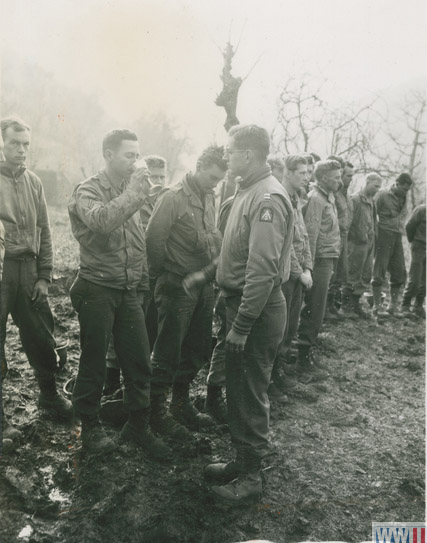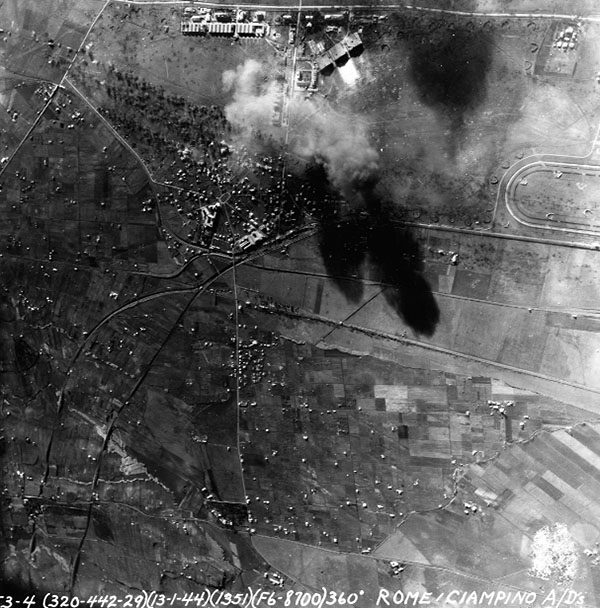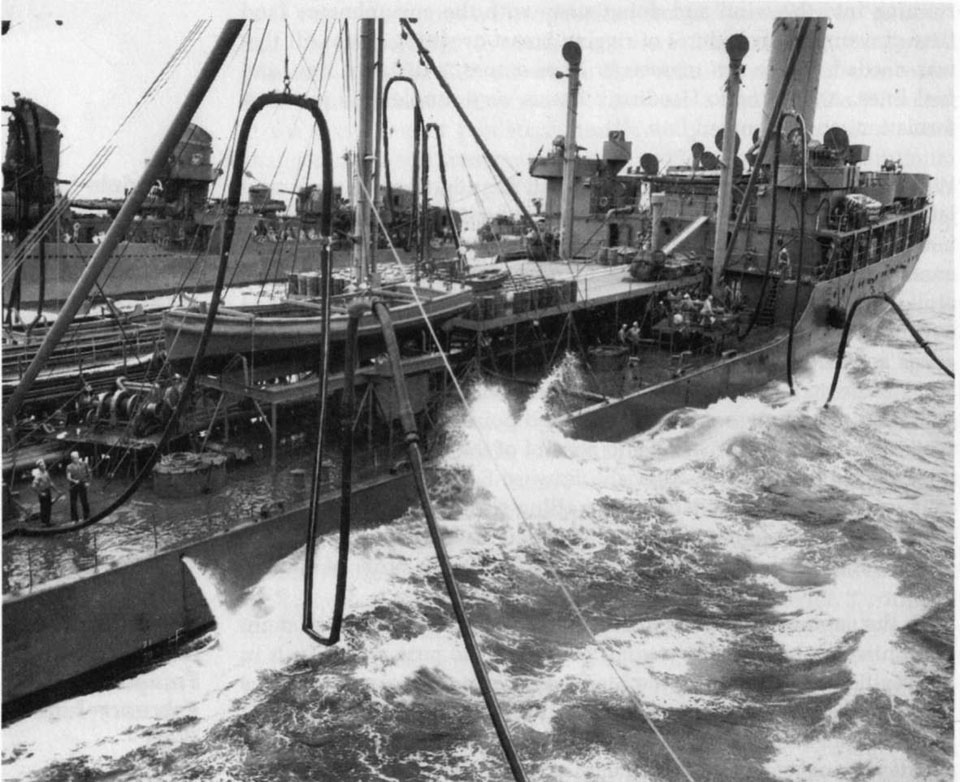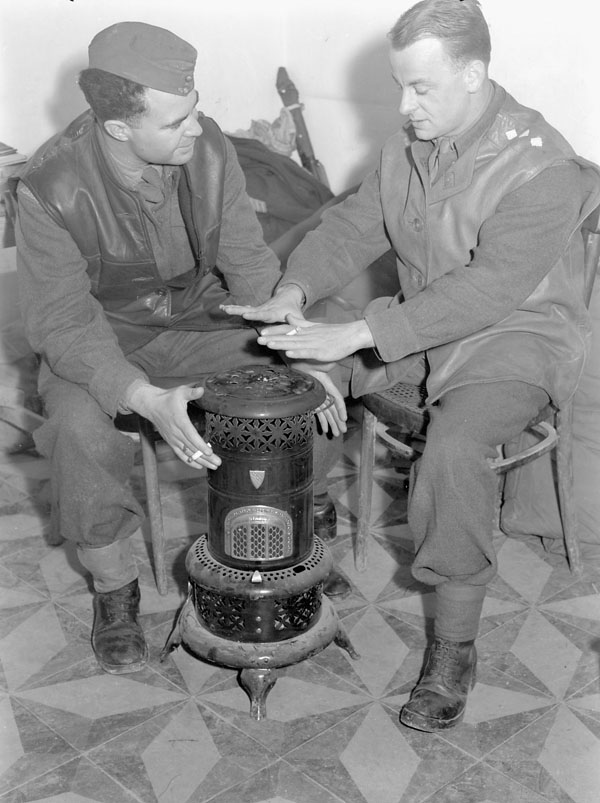Air Operations, Bismarcks
- V Bomber Command B-24s attack Gasmata and 11 42nd Medium Bomb Group B-25s attack Tobera, Rapopo, and Wide Bay.
- The US 864th Engineer Aviation Battalion arrives at Cape Gloucester, New Britain to help rehabilitate and improve the airfield there.
- During the night, 15 XIII Bomber Command B-24s attack the Lakunai and Vunakanau airfields at Rabaul and other Rabaul-area targets.
Air Operations, CBI
BURMA- 6 311th Fighter Group P-51s bomb Maran Ga and Shaduzup and attack Japanese Army ground troops at Lalawng Ga. 1 490th Medium Bomb Group B-25 and 4 P-51s attack supply dumps and the airfield at Myitkyina. 27 10th Air Force P-40s attack dumps and communications targets along the Kamaing-Mogaung road.
- 2 341st Medium Bomb Group B-25s attack shipping, a radio station, and warehouses between Hong Kong and Hainan Island. 6 14th Air Force P-40s attack 2 Japanese Army pack trains between Lungling and Tengchung.
Air Operations, East Indies
V Bomber Command bombers on antishipping sweeps attack a freighter off Tanimbar Island in the Molucca Islands.
[Air Operations, Europe
RAF BOMBER COMMANDEvening Ops:
- 12 Mosquitos are sent to Essen, 9 to Duisburg, 2 to Aachen and 2 to Koblenz.
- 1 Mosquito is lost.
FRANCE:
- 193 IX Bomber Command B-26s attack V-weapons sites in France.
ITALY:
- XII Air Support Command A-36s and P-40s mount numerous tactical missions and attack road and rail targets in and around the battle area.
YUGOSLAVIA:
- MATAF fighter-bombers attack shipping at Sibenik and along the Krka River.
ITALY:
- As part of the preparation for the upcoming amphibious landings at Anzio, 100 15th Air Force B-17s and B-24s and 241 XII Bomber Command B-25s and B-26s, escorted by fighters from both air forces, attack the Rome-area airdromes at Centocelle, Ciampino, Guidonia, and Perugia. The bombers are credited with destroying or disabling most of the Luftwaffe aircraft based in central Italy. In the course of the bomber attacks, which take place about noon, 8 Bf-109s and 11 others are damaged or possibly downed by planes of the 14th anf 325th Fighter Groups.
Air Operations, Marshalls
9 41st Medium Bomb Group B-25s attack shipping at the Wotje Atoll. 21 531st Fighter-Bomber Squadron A-24s and 16 VII Fighter Command P-39 escorts attack the Mille Atoll as does 10 VII Fighter Command P-39 fighter-bombers.
[Air Operations, New Guinea
- More than 130 V Bomber Command B-24s and B-25s, and V Fighter Command P-40 fighter-bombers mount the final air attack against Alexishafen. B-24s and B-25s attack Kaukenau and Timoeka.
- A 418th Night Fighter Squadron P-38 downs a D3A 'Val' dive bomber over Alexishafen at 1845 hours.
Air Operations, Solomons
A VF(N)-75 F4U downs a D3A 'Val' dive bomber near the Torokina airfield on Bougainville at 0415 hours.
[Battle of the Atlantic
U-231 is spotted fully surfaced by Wellington 'L' of No 172 Squadron and attacked with three depth charges. The aircraft suffers flak damage and serious injury to the rear gunner and returns to base for medical assistane. The submarine is so badly damaged the decision is made to scuttle her.
| Class | Type VIIC |
| CO | Kapitänleutnant Wolfgang Wenzel |
| Location | Atlantic, NW of the Azores |
| Cause | Air attack |
| Casualties | 7 |
| Survivors | 43 |
CBI
BURMAIn the Hukawng valley the 114th Regiment of the Chinese 38th Division succeeds in eliminating a Japanese strongpoint in the Yupgang Ga area, so that they now control the whole of the Tarung River area. The 112th Regiment, to the north, has cleared the region between the Tarung and Sanip Rivers. The 1st Battalion, 113th Regiment, upon crossing the Tarung at Yupbang Ga, patrols north to Tabawng Ga.
[Eastern Front
Vatutin's troops take Korets between Novograd-Volynskiy and Rovno.
NORTHERN SECTORWith the fighting in the Ukraine having raged unabated since the Battle of Kursk in the middle of 1943, the Soviets prepare to turn their attention north. Around Leningrad the Leningrad, Volkhov and 2nd Baltic Fronts have trained hard during 1942 and 1943 to break the 18th Army's grip on Leningrad.
Still in much the same positions as in the winter of 1941, the Stavka aims to break the siege for good and destroy the German 18th Army before pushing south and west to reconquer the Baltic States. Govorov's Leningrad Front will begin the offensive from the Oranienbaum pocket and the perimeter of Leningrad, encircling the left wing of the German siege positions against the Gulf of Finland. Meretskov's Volkhov Front is to crush the right flank of the 18th Army against the Volkhov while Popov's 2nd Baltic Front pins down the 16th Army south of Lake Ilmen to prevent the transfer of forces to Leningrad. The Leningrad and Volkhov Fronts have assembled 417,000 and 260,000 men respectively, with 1,200 tanks and Su's, 14,300 arty pieces and nearly 720 aircraft in support.
Against this formidable array Kuchler's Army Group North deploys 40 infantry divisions, 1 panzer grenadier and 2 panzer divisions, split between the 18th Army and 16th Army. The 18th Army fields the III SS Panzer Corps at Oranienbaum, LIV Corps between Oranienbaum and Leningrad, XXVI and XXVIII Corps on the Leningrad perimeter and the I Corps along the Volkhov, a total of only 50,000 combat infantry from a complement of over 200,000 men. It is supported by 200 panzers and assault guns, around a third of which are serviceable. South of Lake Ilmen the 16th Army has its X, XXXVIII and II Corps strung out on a long and vulnerable line to the junction with the 3rd Panzer Army near Pustoshka.
[Italy
In the US 5th Army's II Corps area, the 168th Infantry of the 34th Division finishes clearing the heights overlooking Le Pastinelle and the Rapido Plain. TF B (1st SSF and the 133rd Infantry) is dissolved, having completed its mission; the 133rd RCT remains in position. The 2nd Battalion of the 135th Infantry reduces a troublesome strongpoint (Pt 189) south of Cervaro. II Corps is now in position for an assault on the last hill barring access to the Rapido, Monte Trocchio.
[New Britain
Skirmishing continues around the Cape Gloucester beachhead. The US air force and artillery give unusually strong support to the units on the ground, but the ADC Group still cannot take the day's objective, Hill 660. A unit of specialist engineers arrives on the beachhead to reopen the airfield captured from the Japanese.
[Pacific
The plans for the next campaign in the Pacific, code-named GRANITE, are completed. Around March 24, aircraft from a task force still to be detailed are to attack the big Japanese base on Truk Island, the Japanese Pearl Harbor, in support of the landing on the Admiralty Islands and New Ireland. The invasion of the atolls of Eniwetok and Ujelang in the Marshall Islands is fixed for May 1, the capture of Mortlock and Truk in the Carolines for August 1 and the landing in the Marianas, Operation FORAGER, for November 1. If the operations go well enough to allow Truk Island to be 'skipped', a landing could be made on the Palau Islands on August 1.
[United States, Planning
Adm Nimitz outlines the tentative plan for a year-long campaign in the Central Pacific for 1944, called GRANITE. The focus of offensive operations in the Luzon-China-Formosa area, to be controlled by Allied forces by spring of 1945. Truk will be the target of carrier air raids to isolate the island, followed by an invasion of the Admiralty Islands. Kavieng, New Ireland. Eniwetok Atoll and Vjeland Island in the Marshalls will be captured, followed by the capture of Truk and Mortlock in the Carolines. Saipan, Tinian, and Guam will be captured at the end of the year. If Truk is bypassed as an option, the the Palau Islands can be attacked as early as August. This would allow Central Pacific and SWPA forces to link near the Philippines.
Southern Pacific forces are reorganized to support the emerging strategy in the Pacific. Gen MacArthur's SWPA will receive the Army XIV Corps (25th, 37th, 40th, 43rd, and 93rd Infantry Divisions and the Americal Division) and will assume operational control of the 13th Air Force. All combat support and service support units not required in the South Pacific Area will also be transferred to SWPA. All naval forces, except those assigned to 7th Fleet under MacArthur's command, will be transferred to Adm Nimitz in the Central Pacific Area. Nimitz will receive the 1st and 3rd Maarine Divisions of the I Amphibious Corps as well.
[Images from January 13, 1944
|
|
|
|



